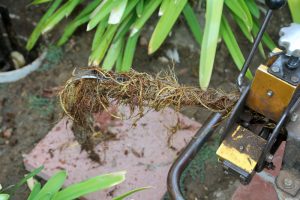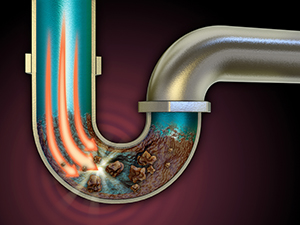How To Identify Tree Roots That Are Disrupting Your Sewer Lines
Date: October 13, 2018
HOW TO DEAL WITH TREE ROOTS IN YOUR SEWER LINES
Don’t cut down that tree. Yet. While it is sure to cause problems on maintenance, tree roots can be dealt with to ensure that your environment isn’t left to disturbed while also putting an end to the issue at hand.
The first step in dealing with the tree root is knowing why it’s there in the first place to prevent it from repeating in the future. Trees naturally seek out nutrient-rich areas in the soil to grow. And if you’ve ever seen an uprooted tree, you’ll know that their roots travel everywhere. That includes, unfortunately, your sewer lines. And when left untreated, the sewer lines are susceptible to excessive tree root growth.
Of course, tree root damage is only possible when roots find a way to get within pipes. As such, ensuring you have sturdy sewer pipes is essential in preventing tree roots from entering pipes they shouldn’t be entering. Whatever process you eventually use to resolve the issue will need to be followed by ensuring that old pipes are replaced by sturdy ones.
HOW TO DETECT TREE ROOTS
If you are dealing with tree roots in your sewer lines, the problem might be hidden in the soil but it is still visible. There are various physical devices that can be used to drill down and search for sewer line damages. Indeed, if you were to call a plumber, they would employ one of those items or even lower a specialized camera to detect sewer line tree intrusion.
MECHANICAL TREE ROOT REMOVAL
One DIY method is implementing the use of a mechanical auger, a mechanical device used to dig deep in a sewer line and clear away pesky roots. While this is a cost-effective method compared to other ones, you will need to consider pairing this with a chemical tree root removal solution as this mechanical option is only temporary. If tree roots got there in the first place, they’ll get there again unless repairs are made. Of course, we’ll explore this later on.
REGULAR TREE ROOT MAINTENANCE
Flushing rock salts down your toilet can aid in tree root removal. It’s important to note, however, that this process carries the risk of killing the tree and other assorted plants in your backyard simply due to the nature of salt; it absorbs nutrients. You will need to do a precarious balancing act if you pursue this option to ensure you resolve the issue at hand without damaging your backyard green life too much. In the case you decide you want to proceed with this process, you will want to flush 2 pounds worth of salt down your toilet in small increments. Afterward, leave your toilet alone to let the salt rub in. If you notice immediate issues with tree roots, this solution is relatively quick but probably not the immediate remedy you’re looking for.
Check your pipes. Tree roots can get stuck where you don’t want them through small cracks and leaks in old, cracked pipes. If you have just dealt with tree root removal, you should expect to see notable tree root damage in your pipes. You can then make the decision to replace or repair them (we’ll touch upon repairs soon). If you are dealing with an old pipe, total replacement might be the option for you. Replacing them with plastic PVC pipes will work and is probably the ideal alternative pipe to use as the material is designed to prevent against future tree root intrusion. One thing to note is that you may need to research proper installation as the material needs to be supported by sand or gravel to protect against damage.
Additionally, you can consider utilizing foaming root killers against root regrowth. This is more of a preventative measure rather than an active one and thus is used primarily for tree root maintenance. Flushing your pipes with different types of tree root foams can get at the problem. Depending on the brand, some foams can prevent tree root growth for upwards of three years.
PIPE REPAIRS
Sealing sturdy pipes is another option to deal with roots in your pipes. Depending on your pipes, cured-in-place, pull-in-place, pipe bursting, or internal pipe coating may be the solution for you. They all have different processes for different types of pipes. And while you can do some preliminary research, these repair decisions will require a professional plumber who can help you decide on the ideal process for your home as it is most likely going to be your local plumber who does the pipe repair.


